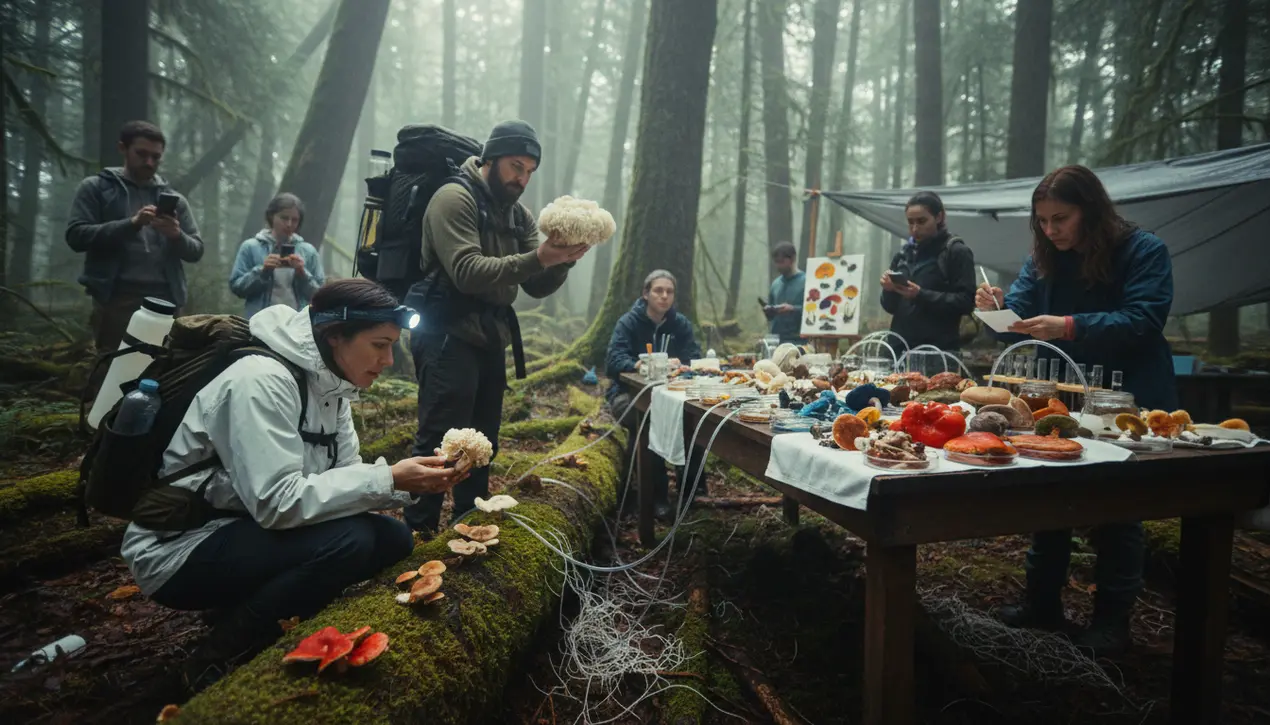
Scienceresearch policy
Mushroom foragers collect 160 species for food, medicine, art, and science.
RA
Rachel Adams
8 hours ago7 min read3 comments
In the quiet, damp corners of the world's remaining old-growth forests, a quiet revolution is unfolding, one mycelial network at a time. The recent documentation of foragers collecting 160 distinct species of wild mushrooms for purposes ranging from sustenance and traditional medicine to avant-garde art and cutting-edge science is not merely a foraging report; it is a profound testament to humanity's rekindling of a primal, symbiotic relationship with the fungal kingdom.This isn't a simple walk in the woods with a wicker basket. It is a sophisticated, multidisciplinary endeavor that bridges the deep ecological knowledge of indigenous communities with the sterile precision of modern laboratories.Consider the humble Lion's Mane (Hericium erinaceus), once a culinary delicacy, now the subject of intense neurological research for its potential to stimulate nerve growth factor, offering a glimmer of hope in the fight against Alzheimer's and dementia. Or the artist in a Pacific Northwest studio, using the vibrant pigments of the charcoal burner (Russula cyanoxantha) to create biodegradable dyes, their work a silent protest against the toxic runoff of the textile industry.This movement is a direct, living response to the biodiversity crisis, a hands-on act of conservation that catalogues and utilizes nature's pharmacy and pantry before it is lost to deforestation and climate change. The foragers are the frontline scouts, their findings prompting mycologists in university labs to sequence genomes, searching for novel enzymes that can break down plastic waste or new antiviral compounds in an era of rising pandemics.Yet, this renaissance is shadowed by peril. The very ecosystems that host this fungal diversity are under constant threat from industrial agriculture and urban sprawl, while the delicate knowledge of identifying, for instance, a life-saving Turkey Tail mushroom (Trametes versicolor) for its well-documented immunomodulating properties from a look-alike, toxic false turkey tail, risks being lost with each passing generation. The work of these modern-day explorers is therefore a race against time—a crucial, ongoing project to map, understand, and preserve a biological and cultural heritage that holds untold solutions for our future, proving that the health of our planet and our own well-being are inextricably linked through the vast, unseen web of mycelium beneath our feet.
#research policy
#mycology
#fungi
#foraging
#ethnobotany
#food science
#medicinal plants
#featured
Stay Informed. Act Smarter.
Get weekly highlights, major headlines, and expert insights — then put your knowledge to work in our live prediction markets.
Comments
Loading comments...
© 2025 Outpoll Service LTD. All rights reserved.